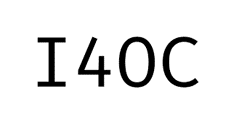Metodología moderna con influencia psicométrica para mejorar la comprensión de la parte operativa de los números fraccionarios
DOI:
https://doi.org/10.18050/psiquemag.v9i2.2737Palabras clave:
Transposición didáctica, Operacionalidad, Número racional, Desempeño académicoResumen
Este artículo tiene como objetivo fundamental explicar la influencia positiva de una nueva e innovadora metodología de enseñanza, aplicada a la operacionalidad matemática de los Números Racionales (NR) de estudiantes; denominada Transposición Didáctica (TD). La investigación se desarrolló bajo el diseño hipotético-deductivo, cuya muestra estuvo conformada por un grupo de estudiantes de las carreras de ciencias de una universidad privada. Para tal fin se usaron 2 instrumentos de medición, una la Ficha de Cotejo, y otra las Pruebas de conocimiento de entrada y salida. Se concluyó que la Transposición Didáctica en mención tiene una influencia de manera determinante en la comprensión efectiva de los estudiantes.
Descargas
Referencias
Castaño, N.A. (2014). Dificultades en la enseñanza de las operaciones con números racionales en la educación secundaria. [tesis de maestría, Universidad Autónoma de Manizales]. http://repositorio.autonoma.edu.co/jspui/bitstream/11182/234/1/Dificultad_ense%C3%B1an_operacion_n%C3%BAmero_racional_educa_secundaria.pdf
Chevallard, Y. (2000). La Transposición Didáctica: del saber sabio al saber enseñado. Buenos Aires: Aique.
D’Amore, B. y Fandiño Pinilla, M. (2017). La didáctica de la didáctica de la matemática: experiencias personales e indicaciones críticas de algunas discusiones e investigaciones. En B. D’Amore, L. Radford, & Énfasis (Ed.), Enseñanza y aprendizaje de las matemáticas: problemas semióticos, epistemológicos y prácticos (1) pp. 43 - 64. Bogotá, Colombia: Universidad Distrital Francisco José de Caldas. file:///C:/Users/Adan/Downloads/Ensenanza_y_aprendizaje_de_las_matematic.pdf
Doroteo, F. P., y Sarmiento, E. A. (2015). Análisis de la actividad docente: El estudio de los triángulos en el 4° grado de secundaria de la I.E. N° 2074 Virgen Peregrina del Rosario, UGEL N° 02 San Martín de Porres.
Fandiño, M. P. (2009). Las fracciones. Aspectos conceptuales y didácticos. Bogotá Colombia: Magisterio.
Franco, C. R. y Sánchez, E. Q. (2015). Diseño de material didáctico para el fortalecimiento del pensamiento matemático en la enseñanza de la educación básica y media. http://repositorio.utp.edu.co/dspace/handle/11059/5382
Gárate, I. C. (2002). Sistema de los números racionales. En UNMSM, Centro Preuniversitario. pp. 63-76. Lima Perú: Centro de Producción Editorial UNMSM.
Hernández, R. S., Fernández, C. C., y Baptista, M. L. (2014). Metodología de la Investigación. México: McGraw-Hill / Interamericana Editores.
Mateo, J. (2005). La evaluación educativa, su práctica y otras metáforas. Madrid: Horsori.
Oviedo, Lina y Kanashiro, Ana (2012). Los registros semióticos de representación en matemática. Revista Aula Universitaria 13 | año 2012 | Págs. 29 a 36. https://bibliotecavirtual.unl.edu.ar/publicaciones/index.php/AulaUniversitaria/article/download/4112/6207/
Pérez, J. y Gardey, A. (2008). Concepto de evaluación. Definición de. https://definicion.de/evaluacion/
Pérez, Y. y Ramírez, R. (2011). Estrategias de enseñanza de la resolución de problemas matemáticos. Fundamentos teóricos y metodológicos Revista de Investigación, vol. 35, núm. 73, mayo-agosto, 2011, pp. 169-194. https://www.redalyc.org/pdf/3761/376140388008.pdf
Requena, F. (1998). Género, redes de amistad y rendimiento académico. Papers. Revista de Sociología, 56, 233-242. doi: http://dx.doi.org/10.5565/rev/papers.1952
Saavedra, C. y Salcedo, L. (2015). Rendimiento académico en función del estilo de aprender en estudiantes universitarios. Miradas, 1(13), 55-67. doi: http://dx.doi.org/10.22517/25393812.12121
Descargas
Publicado
Número
Sección
Licencia
Derechos de autor 2020 PsiqueMag

Esta obra está bajo una licencia internacional Creative Commons Atribución-NoComercial-SinDerivadas 4.0.
Usted es libre de:
- Compartir — copiar y redistribuir el material en cualquier medio o formato
- El licenciador no puede revocar estas libertades mientras cumpla con los términos de la licencia.
Bajo las condiciones siguientes:
-
Reconocimiento — Debe reconocer adecuadamente la autoría, proporcionar un enlace a la licencia e indicar si se han realizado cambios<. Puede hacerlo de cualquier manera razonable, pero no de una manera que sugiera que tiene el apoyo del licenciador o lo recibe por el uso que hace.













